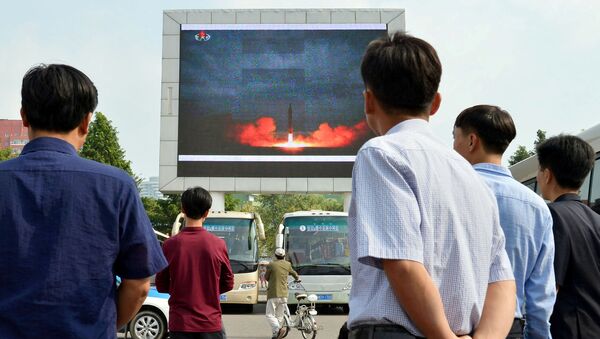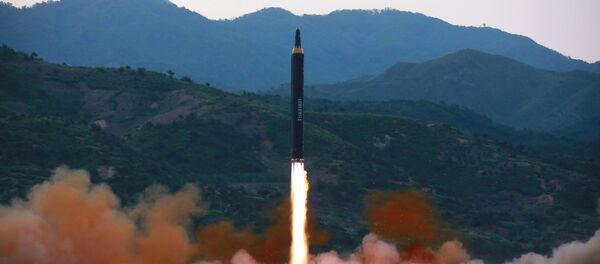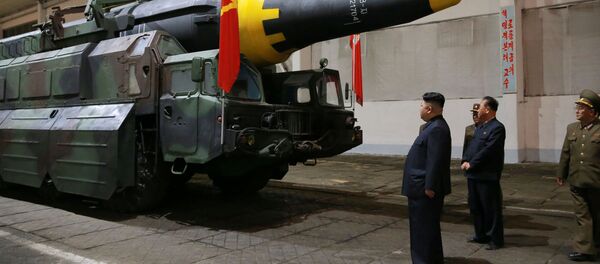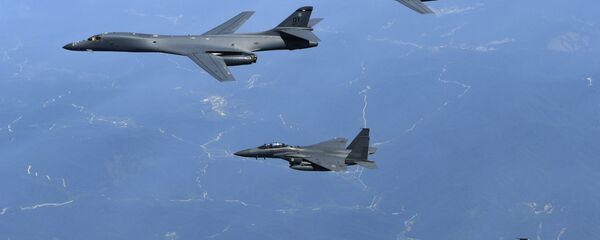On Tuesday, North Korea fired a missile that flew over northern Japan’s airspace. The rocket passed over the Japanese island of Hokkaido, falling into the Pacific Ocean.
The Japanese military did not attempt to shoot down the missile, but issued a safety warning to citizens to take cover.
Dr. Andrew O'Neil, Dean and Professor of Political Science in Griffith Business School at Australia-based Griffith University, explained to Sputnik Radio what is so significant about this particular launch.
"The latest missile test fired by North Korea is qualitatively different from the previous ones. While the missile fired from Pyongyang was not an intercontinental ballistic missile, which could reach ranges beyond 5,500 kilometers and strike targets in the continental US, it does appear to be an intermediate-range ballistic missile which was flying directly over the northern Japanese island of Hokkaido. It was not armed with conventional or nuclear warhead but very clearly, it was the third time that the North Koreans have sent a missile flying through Japanese air space over the country," he told Sputnik.
The political scientist further recalled that North Korea first did it in 1998 with Daepodong-1 missile. It did it again in 2009. But on both of those occasions the North Korean government claimed that it was a satellite launch. Hence what is significant about this particular occasion, when North Koreans have again fired a missile over the Japanese territory, is that they have made no attempts to justify it as a satellite "test".
"I think it is very clear that it was intended by Pyongyang to be seen as a very clear and direct message not just to Japan, but to other regional countries, that North Korea basically can strike pretty much any country in the neighborhood with a nuclear device," he said.
Following the test, senior Russian lawmaker Konstantin Kosachev has suggested that North Korea's latest missile test proves that its threat to fire four missiles into the waters near the US Pacific territory of Guam "was not a bluff."
Dr. O'Neil commented on the suggestion.
"It is very much directed at Japan, which in North Korea's eyes is portrayed as an enemy equal to the US, if not worse than the US," he told Sputnik.
However, if we look at the range that the recent missile test flown over Hokkaido, which is in the opposite direction of Guam, he said, and we plot this distance onto how far it is to reach from North Korea to Guam, it clearly shows that North Korea is able to strike Guam.
"The countries that wish to do North Korea harm, primarily the US and, to a lesser extent, Japan and other countries of the region, don't have a lot of economic leverage over North Korea," he told Sputnik.
The only way the US can hurt Pyongyang economically is through a third party, namely the Chinese banks, which do business and lend money to North Korea, he went on to say. And the US is increasingly looking at targeting China's banks.
The second reason is that China, the country which could do the most economic harm to North Korea in the region, has very little incentive to do so, he explained. Even though Beijing has supported UNSC sanctions against Pyongyang, it is clear that China is very patchy in implementing these sanctions.







